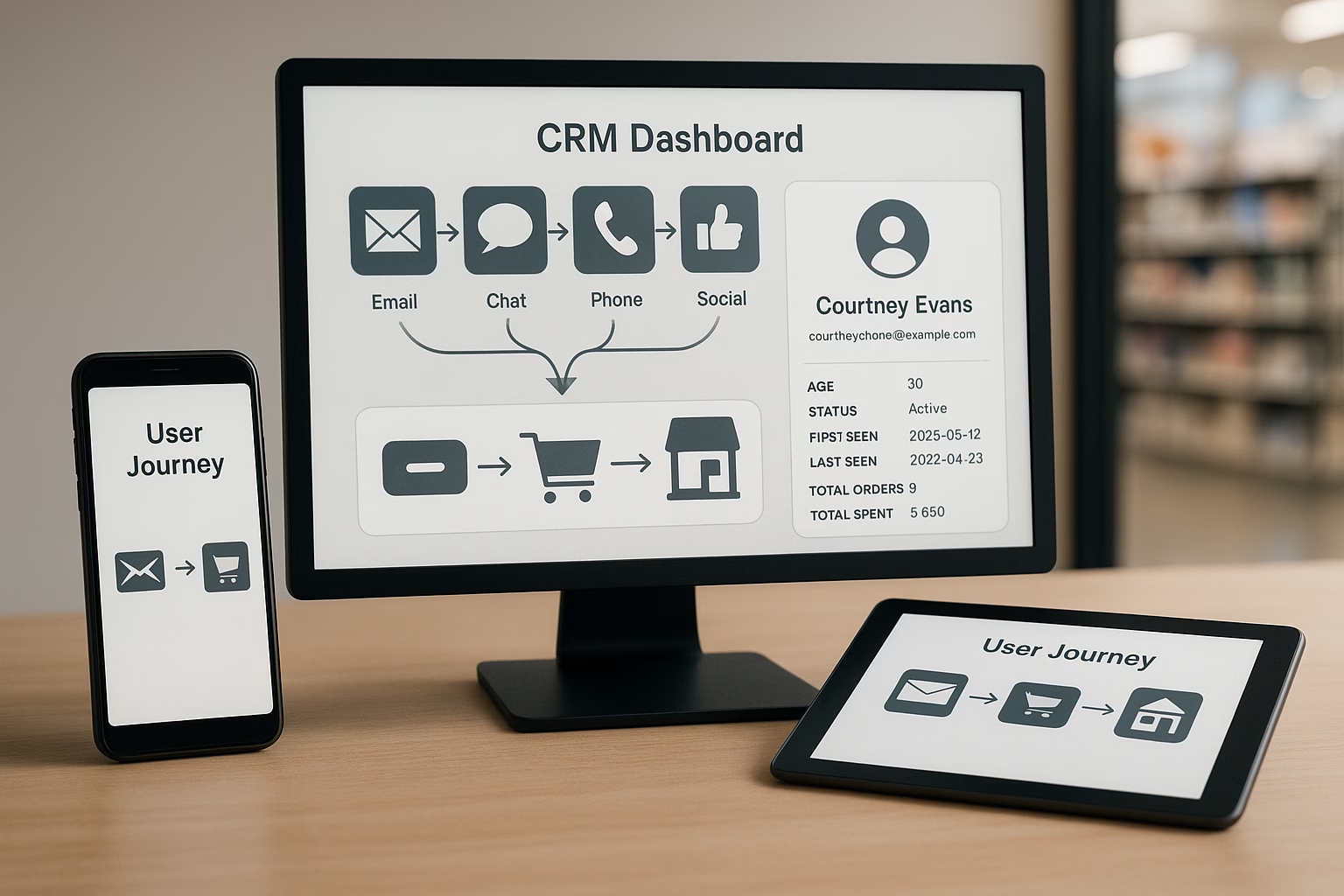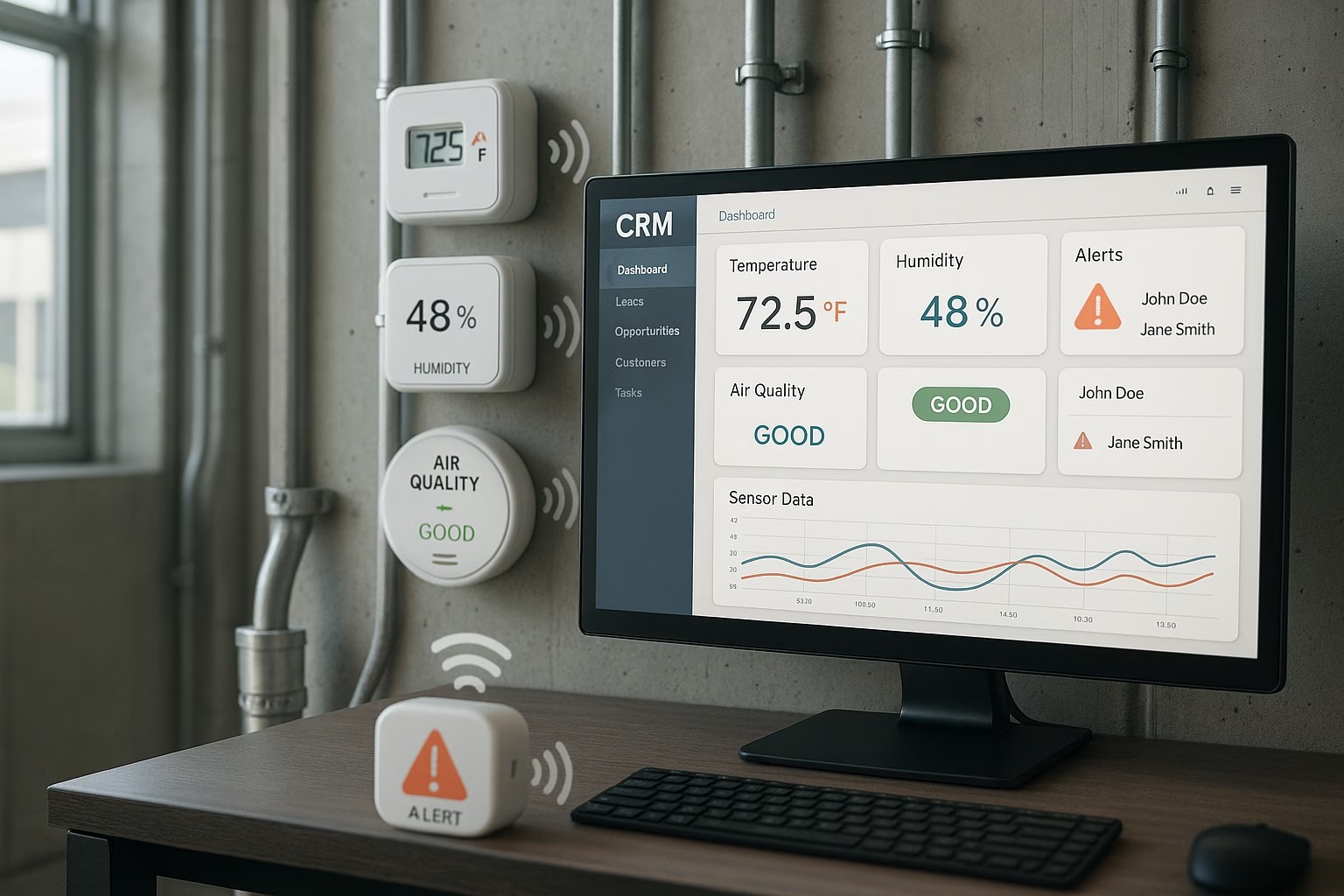The system is broken
If you’re leading a marketing team right now, you’re probably running harder than ever and still watching pipeline targets slip out of reach. You’ve revisited your strategy, adjusted spend, tuned your campaigns, and pushed your team to do more. But deep down, you know the issue isn’t inside your org. You’re doing the right things. The system around you stopped working. For more than a decade, B2B marketing operated inside a predictable model. Budgets were steady, performance channels delivered measurable returns, and marketing automation gave us a sense of control. Buyers were visible, and their journey could be mapped, nurtured, and scored. That predictability let marketing grow up as an operating discipline. But the ground shifted under that model. Buyers changed how they research and decide. Channels became crowded and expensive. Technology lagged behind new behaviors. The system that once supported growth now constrains it.
The budget squeeze
Anyone managing a marketing budget today knows how much has changed. Gartner’s 2025 survey shows budgets holding at 7.7 % of company revenue, down from around 10–11 % before the pandemic. That gap represents a sharp drop in real capacity once you factor in inflation, higher agency costs, and rising media prices. What looks flat in a chart feels like contraction on the ground.
Inside many organizations, this shift has become the norm. Nearly forty percent of CMOs expect to reduce agency or labor costs to stay within plan, and more than half admit their current budgets can’t support the strategies they’ve committed to. The tension between financial targets and business expectations keeps widening, and the shortfall is being absorbed by marketing teams.
The economics of acquisition add another layer of pressure. WordStream’s latest data puts the average Google Ads lead at just over seventy dollars, about one-third higher than two years ago. Sopro reports B2B costs per lead ranging from $160 for smaller firms to over $400 for enterprise categories, while FirstPageSage lists paid SaaS leads above $300. LinkedIn and Meta have seen double-digit CPM increases since 2023, with LinkedIn clicks in technology now priced on par with search.
For most marketers, this translates to less reach, fewer interactions, and higher stakes on every campaign. Budgets once spread across experimentation, performance, and brand now concentrate on what can be justified immediately. Campaigns that used to run for a quarter are cut down to a month. Brand programs pause when the pipeline dips. Every line item has to earn its keep inside a single reporting cycle.
The rhythm of marketing work has changed as well. Planning happens in shorter increments, creative cycles compress, and teams spend more time forecasting than exploring. The cumulative effect is subtle but real: less room for risk, fewer long-term bets, and a steady erosion of creative confidence. What used to feel like an investment now feels like maintenance.
When the market expands again, the organizations that protected some capacity for brand and experimentation will recover faster. Those who have turned marketing into a cost discipline will need time to rebuild the capability they cut away. The budget pressure is becoming the baseline operating environment for modern marketing.
The invisible buyer
The buyer used to leave a trail. They filled out forms, opened emails, and appeared in reports. That trail has faded. Research from 6sense shows about seventy percent of the B2B buying journey now happens anonymously. Gartner found that three-quarters of buyers delay contact with sales until they are close to a decision, and Digital Commerce 360 reports that a third of prospects disengage after the first meeting.
Inside companies, buying decisions now develop quietly. Teams gather information from peers, online communities, and internal conversations. They consult analyst reports, watch videos, and share screenshots in Slack or Teams channels. Most of this activity never touches your website or your CRM. By the time your campaign reaches them, they’ve already compared options and formed preferences.
Buying groups have also grown. Gartner’s data shows an average of six to ten people involved in most B2B purchases, with large enterprise decisions often involving more than a dozen. Each participant brings different priorities and risk tolerance. A few will engage directly, but many influence outcomes indirectly through internal discussion.
For marketing, this means the funnel that once looked linear has become distributed and opaque. Traditional lead scoring and nurture flows depend on visibility that no longer exists. Campaign analytics show fewer signals even as total engagement rises in places you can’t track. Marketing now operates in an environment where influence matters more than control.
The infrastructure problem
Marketing technology was built for visibility. It depended on cookies, tracking pixels, and user identification to show progress from awareness to purchase. That foundation is eroding. Browser privacy defaults, regional regulation, and user consent barriers have limited what can be measured. The data that once held attribution models together has thinned to fragments.
Lead scoring based on web behavior now misrepresents intent. Open rates are distorted by privacy filters. Multi-touch attribution, once presented as a solution, often distributes credit arbitrarily because it relies on incomplete information.
Despite these limitations, platform costs continue to rise. Subscription fees for marketing automation and data enrichment tools climb each year, yet most systems still operate on the same logic they did a decade ago. Dashboards display metrics that look precise but describe a shrinking portion of the real journey.
Teams feel the gap between what the reports show and what they sense from the market. Operations groups spend more time fixing integrations and validating data than interpreting it. Campaign performance meetings revolve around numbers that no one fully trusts. The infrastructure hasn’t collapsed, but it no longer reflects how buyers behave. It delivers structure without clarity.
The attention collapse
Marketing output has multiplied, while attention has stayed finite. Backlinko estimates more than six million new blog posts are published daily. LinkedIn’s organic reach now sits around one to two percent, about half of what it was three years ago. Infraforge places average cold email open rates below thirty percent, with replies near five.
The volume of content and outreach has turned most channels into background noise. Every team has learned how to automate production, schedule posts, and personalize messages at scale. Very few have the time to create work that stands out. The result is more activity and less resonance.
Inside organizations, the shift shows up as constant output pressure. Marketing calendars fill quickly, and creative work is measured by quantity rather than effect. Time that could go into research or ideas is spent meeting distribution quotas. It’s efficient in form but not in outcome.
Audiences still pay attention, but selectively. They follow credible voices, peer recommendations, and authentic expertise. They ignore repetition. The difference between marketing that performs and marketing that disappears has less to do with algorithm changes than with relevance.
The measurement gap
Many marketing scorecards are still anchored in a world of visible funnels and gated conversions. Televerde and Anteriad found that most companies haven’t updated their MQL definitions in more than five years. Lead volume remains a standard metric, even as its relationship to revenue weakens.
Sales teams treat MQL reports with skepticism because they see the gap firsthand. Leads that meet the old criteria rarely align with actual buying intent. This disconnect leaves marketers defending metrics that no longer influence outcomes.
The data that tracks true growth (brand awareness, share of search, and buyer preference) often sits outside standard dashboards. These indicators develop slowly and resist attribution, but they correlate strongly with long-term pipeline performance. Companies that monitor them tend to weather market shifts better because they understand where demand will surface next.
Some organizations are rebuilding their measurement systems around contribution to pipeline and deal velocity rather than isolated conversions. Others combine first-party engagement data with external indicators like search trends or community sentiment. These approaches take more time to establish but provide a more accurate view of how marketing supports growth.
Until measurement aligns with reality, marketing will continue to look productive in reports and constrained in results.
Rebuilding the system
There isn’t a quick fix. You can’t automate your way out of this or add another tool to close the gap. The next phase of B2B growth will come from rebuilding how marketing works, not from optimizing the old model.
Marketing doesn’t need another round of optimization. It needs a different foundation. The systems most teams run today were built for a world where data was abundant, attention was cheap, and buyers followed visible steps. None of that is true anymore. The work now is to design something that fits the market we actually have.
The first place to start is measurement. Metrics built for lead funnels no longer describe how demand develops. Counting form fills and email clicks gives a false sense of activity. The more useful questions are about contribution: how marketing changes perception, creates preference, or shortens the path to purchase once the buying group is engaged. That kind of measurement depends on tighter alignment with sales, shared access to account data, and patience to see patterns emerge over time rather than quarters.
Investment strategy comes next. Performance channels still matter, but they can’t do all the lifting. Short-term efficiency has crowded out the long-term work that builds credibility. Brand is the memory buyers rely on when they finally move from research to action. It carries trust when outreach can’t. Teams that treat brand and performance as one system rather than separate budgets are starting to see steadier growth, even in markets where demand is flat.
The human side of marketing also needs repair. Automation created speed and scale but drained tone and texture. The content that stands out now isn’t louder or more frequent; it feels closer to how real people talk and decide. Substance and clarity travel further than volume. The brands that understand that are already earning disproportionate attention.
Rebuilding isn’t a campaign. It’s an operational reset. It means fewer dashboards and more context, fewer transactions and more relationships, fewer separate functions and more connected systems. The companies that take that step will still use data, automation, and media—but as tools, not crutches.
Now what?
Most marketing leaders can see the cracks in the system. Fewer have the space or backing to redesign it. Change starts by admitting that the playbook doesn’t fit anymore. From there, progress looks incremental: modernizing how you measure, how you invest, and how you talk to buyers who prefer to stay unseen. At Sirocco, we work with B2B teams that are rebuilding around that reality. We help them connect brand, demand, and data into a single growth system that matches how buyers behave today. It’s slower work at first, but it scales more honestly. If your pipeline challenges feel bigger than performance, the problem isn’t effort—it’s architecture. And architecture can be rebuilt.
You already know the system is broken. The question is whether you’ll keep optimizing a model that’s past its prime or start building the one that actually fits the world you’re marketing to now. Reach out to our team if you want to bounce ideas or bring in some external experts:










